Books
Books

The New Atlantis
Three short novels by some of science fiction's greatest writers - Ursula K. Le Guin, James Tiptree, Jr., and Gene Wolfe, edited by Robert Silverberg.
The New Atlantis, by Ursula K. Le Guin: In a dark near-future, global warming and a ruined ecology is causing the continents to sink into the oceans just as the towers of Atlantis re-emerge above the sea. Locus award winner and Hugo finalist.
Silhouette, by Gene Wolfe, and A Momentary Taste of Being, by James Tiptree, Jr., present two different masterpieces on a similar theme: A deep-space colony exploration ship approaches their target planet, where they must investigate whether or not it's hospitable enough to signal Earth to send more colonists. Things are not as they seem... Nebula / Locus award finalist stories.
Three of science fiction's most gifted writers-winners of Hugos, Nebulas, and a National Book Award-unleash their imaginations to present startling glimpses of humanity's future on Earth and in space. Blended into that future are age-old mysteries of the human psyche, mythicized fragments of the past, and the eternal question of biological purpose.
In "Silhouette" Gene Wolfe creates a self-contained world, an immense starship on a multi-generational mission to assure continuation of the race by colonizing the stars. It is a world, devised and constructed through man's technical genius, that comes to be threatened by the primitive superstitions and petty jealousies carried into space by the very technicians who serve in science's most ambitious project. The salvation of the mission and of the hundreds of lives bound to it comes to depend on a curious interplay of technology and occult human abilities.
Ursula Le Guin remains earthbound, but on a "brave, new world" where a bureaucratic tyranny proves less and less able to cope with supplying the needs of a burgeoning population. A subtle irony pervades her story, "The New Atlantis." Even as government strives to assure permanence of control, geologic upheavals awaken a haunting racial memory of antediluvian civilizations and grandeur long buried beneath the seas.
James Tiptree, Jr., confronts a disciplined space crew with humanity's first encounter with a wholly alien life form. Here again the survival of the human race depends on successful location of a new planet where mankind can establish its society with renewed vigor. But out of the questions of how to survive any threat that may be posed by an unknown life form arises a more central question: Is it intended that humanity survive?
Published August 2020

Experiments in Joy
Gabrielle Civil's Experiments in Joy celebrates black feminist collaborations and solos in essays, letters, performance texts, scores, images, and more. Following her explosive debut Swallow the Fish, Civil now documents her work with From the Hive, No. 1 Gold, and Call & Response—whose collaborative Call inspired the title. The book also features her solo encounters with artists and writers, ancestors and audiences. Here you will find black girlhood, grief, ghosts, girls in their bedrooms, lots of books, dancing, reading, falling in love, fighting back, and flying. With lots of heart and the help of her friends, Civil keeps reckoning with performance, art and life.

Clay's Ark
A gripping tale of survival as an alien pandemic irrevocably changes humanity, from the critically acclaimed author of Parable of the Sower. In a violent near-future, Asa Elias Doyle and her companions encounter an alien life form so heinous and destructive, they exile themselves in the desert so as not to contaminate other humans. Resisting the compulsion to infect others is mental agony, but succumbing would mean relinquishing their humanity and free will. Desperate, they kidnap a doctor and his two daughters as they cross the wasteland — and, in doing so, endanger the world.
OCTAVIA E. BUTLER was a renowned writer who received a MacArthur "Genius" Grant and PEN West Lifetime Achievement Award for her body of work. She was the author of several award-winning novels including Parable of the Sower, which was a New York Times Notable Book of the Year, and was acclaimed for her lean prose, strong protagonists, and social observations in stories that range from the distant past to the far future. Sales of her books have increased enormously since her death as the issues she addressed in her Afrofuturistic, feminist novels and short fiction have only become more relevant. She passed away on February 24, 2006.
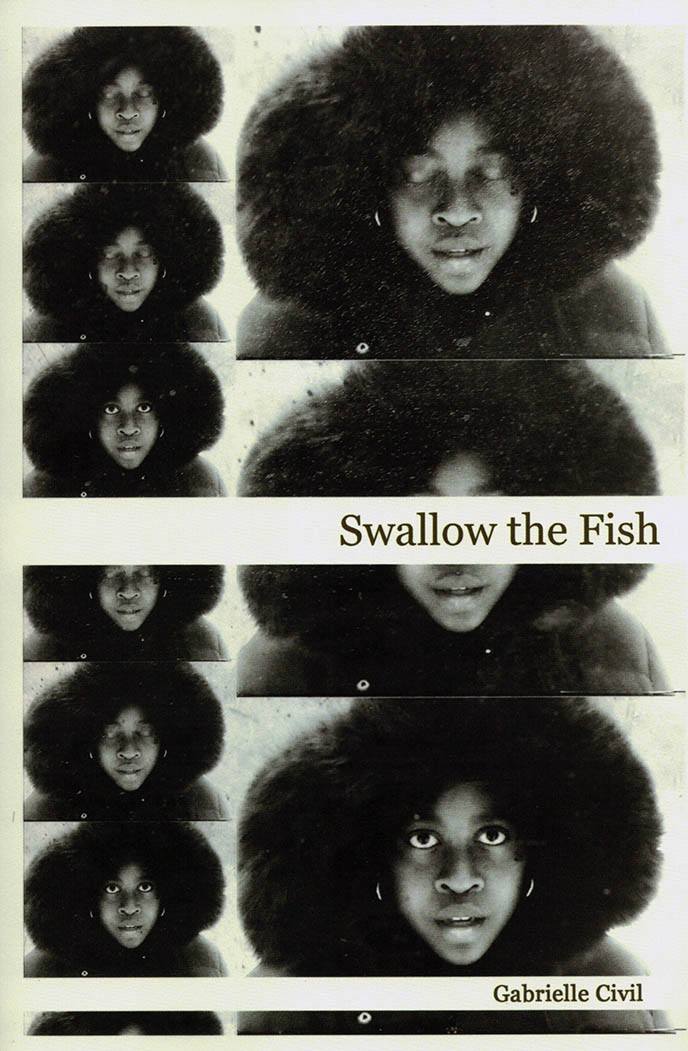
Swallow the Fish
Gabrielle Civil's Swallow the Fish is a memoir in performance art that explores the medium from within its beating heart. Adding its voice to black feminist conversations, it combines essays, anecdotes, and meditations with original performance texts to confront audience, motivation, and fears. Both joy and panic appear in Civil's world of performance, where neither walls nor city limits set the scope of the stage. Civil bares vulnerabilities and enthralls readers, asking essential questions and embodying dreams.
Published 2017.
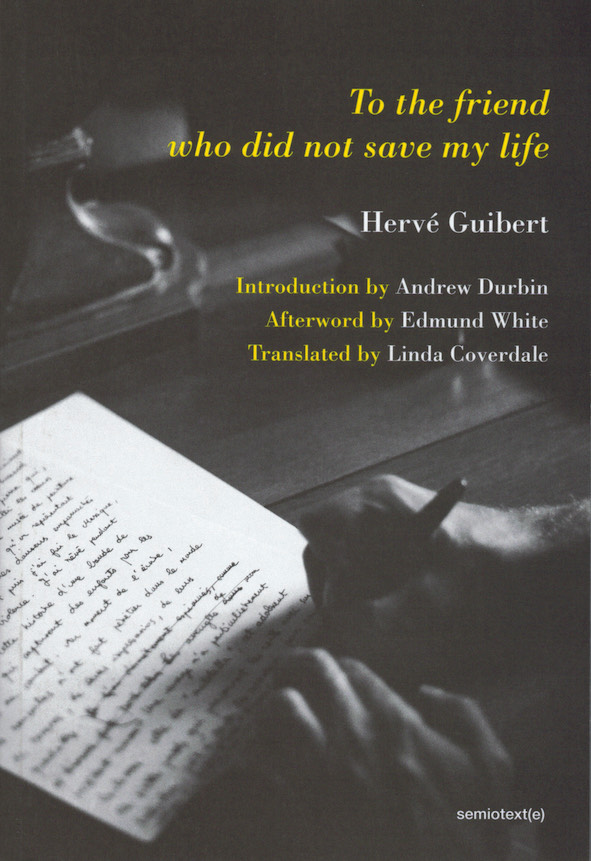
To the friend who did not save my life
A novel that describes, with devastating, darkly comic clarity, its narrator's experience of being diagnosed with AIDS. First published by Gallimard in 1990, To the Friend Who Did Not Save My Life describes, with devastating, darkly comic clarity, its narrator's experience of being diagnosed with AIDS. Guibert chronicles three months in the penultimate year of the narrator's life as, in the wake of his friend Muzil's death, he goes from one quack doctor to another, describing the progression of the disease and recording the reactions of his many friends.
The novel scandalized the French media, which quickly identified Muzil as Guibert's close friend Michel Foucault. To the Friend became a bestseller, and Guibert a celebrity. Guibert continued to document the daily experiences of his body in a series of novels and diaries, mostly published posthumously. To the Friend has since attained a cult following for its intimate and candid tone, its fragmented and slippery form. As Edmund White observed, "[Guibert's] very taste for the grotesque, this compulsion to offend, finally affords him the necessary rhetorical panache to convey the full, exhilarating horror of his predicament." In his struggle to piece together a language suited to his suffering, Hervé Guibert catapulted himself into notoriety and sealed his reputation for uncompromising, transgressive prose.
Translated from French by Linda Coverdale
Introduction by Andrew Durbin
Afterword by Edmund White
Published May 2020

Our Fatal Magic
Our Fatal Magic is a collection of feminist science fiction by contemporary artist Tai Shani. Foregrounding explorations of sensation, experience, and interiority, these twelve fantastical prose vignettes refract their ideas through a series of curious characters, from Medieval Mystics to Cubes of Flesh, from Sirens to Neanderthal Hermaphrodites. Drawing on the speculative narrative strategies pioneered by writers like Marge Piercy, Octavia Butler and others, Our Fatal Magic metabolizes new and necessary fictions from feminist and queer theory to propose an erotic, often violent space of critique in which gender constructs are destabilized, alternative histories imagined, and post-patriarchal futures proposed.
Tai Shani is a Tutor in Contemporary Art Practice at the Royal College of Art. Shani's multidisciplinary practice, comprising performance, film, photography, and installation, revolves around experimental narrative texts.
Published December 2019

Written in Invisible Ink
Written in Invisible Ink maps the writer's artistic development, from his earliest texts—fragmented stories of queer desire—to the unnervingly photorealistic descriptions in Vice and the autobiographical sojourns of Singular Adventures. Propaganda Death, his harsh, visceral debut, is included in its entirety. The volume concludes with a series of short, jewel-like stories composed at the end of his life. These anarchic and lyrical pieces are translated into English for the first time by Jeffrey Zuckerman.
From midnight encounters with strangers to tormented relationships with friends, from a blistering sequence written for Roland Barthes to a tender summoning of Michel Foucault upon his death, these texts lay bare Guibert's relentless obsessions in miniature.
Hervé Guibert published twenty-five books before dying of AIDS in 1991 at age 36. An originator of French autofiction of the 1990s, Guibert wrote with aggressive candor, detachment, and passion, mixing diary writing, memoir, and fiction. Best known for the series of books he wrote during the last years of his life, chronicling his coexistence with illness, he has been a powerful influence on many contemporary writers.
Edited and Translated by Jeffrey Zuckerman
Published May 2020

Sex as Care and Other Viral Poems
In Neves Marques’ book, polyamorous encounters and the intimacy of queer lives run parallel to the history of modern science.
Pedro Neves Marques's first poetry collection includes two sets of poems written between 2017 and 2019 and spans the author's biographical geographies, from Brazil and Lisbon to London and New York. From precise geometries to tragicomic gestures and long free verse confessions, Neves Marques’s poetry moves with great honesty between deep social analyses to the tactile quality of remembrance. Whether in a long and devoted poem tying together friendship and historical legacies across the Atlantic in “Brazil” or in the condensed and timed recollections of “Thirteen Days in Lisbon,” the poems collected in "Sex as Care" acknowledge the reality of both care and violence in intimacy. For their part, "Other Viral Poems" takes a more programmatic approach, drawing an analogy between the spread of the Zika epidemic in Brazil, the genetic modification of its carrier mosquito, and the rise of fascism to mount a critique of both gender biases in science and anti-queer populisms. In orderly fashion, the poems coopt a militaristic and technical language to instead create spaces of intimacy where gender, love, trust, and unequal experiences are tested.
Pedro Neves Marques is a writer, visual artist, and filmmaker. Born in Lisbon, they have lived in London, São Paulo, and New York. They have read at e-flux, Poetry Project, The Vera List Center, McNally Jackson Bookstore, Nottingham Contemporary, Gasworks, and Sesc São Paulo, among many others. They have also published two short-story collections, most recently in Portuguese "Morrer na América” (Kunsthalle Lissabon/ Arranha-Céus) as well as in publications by e-flux journal, The Baffler, Verso, Haus der Kulturen der Welt, and MIT Press.

I saw the world collapse and it was only a word
In I saw the world collapse and it was only a word, published on the occasion of his concert in December 2019 at Albertinum, Staatliche Kunstsammlungen Dresden, Hassan Khan articulates the communal yet individualized feelings of sadness and trouble before they coalesce into larger structures and institutions through a libretto for five vocalists, showing us the fleeting moments of the world as it is collapsing rather than only the dust of its collapse. The work is characterized by layered fragments that gesture toward a tonality and unity that nearly coalesce, but that dissipate as soon as they emerge. The collapsing word could be anything: the death of a family member; a defeated revolution; a heartbreak. It means something different from one place, one individual, to the next while still existing so broadly that it defines a more communal experience felt across the globe. A collapse from what? Rather than a doomsday message, it intimates that perhaps the world isn't really collapsing at all. Instead, Khan poses collapse as an ever-present underlying condition, challenging much contemporary intellectualizing that positions the current moment as somehow peculiar or extraordinary.
"1) Blame your partner for every disaster that has even occurred: G.
2) Oscillate in confusion between these two pitches using a glissando to come and go at a narcotic speed: A♭ C♭.
3) Argue with your best friend while looking at them using this progression: G – B – D – E♯.
4) Demand an apology using the progression: E – C – A♭♭ – F.
5) Beg for forgiveness by using the two highest pitches you can reach.
6) Ask a question by humming this progression: E♭♭ – D♭ – Ax – A♯.
7) Lose interest in everything using this progression: F – A – C – C♯."
Hassan Khan (born 1975 in London, lives and works in Cairo) works with image, sound, text, space and situation.
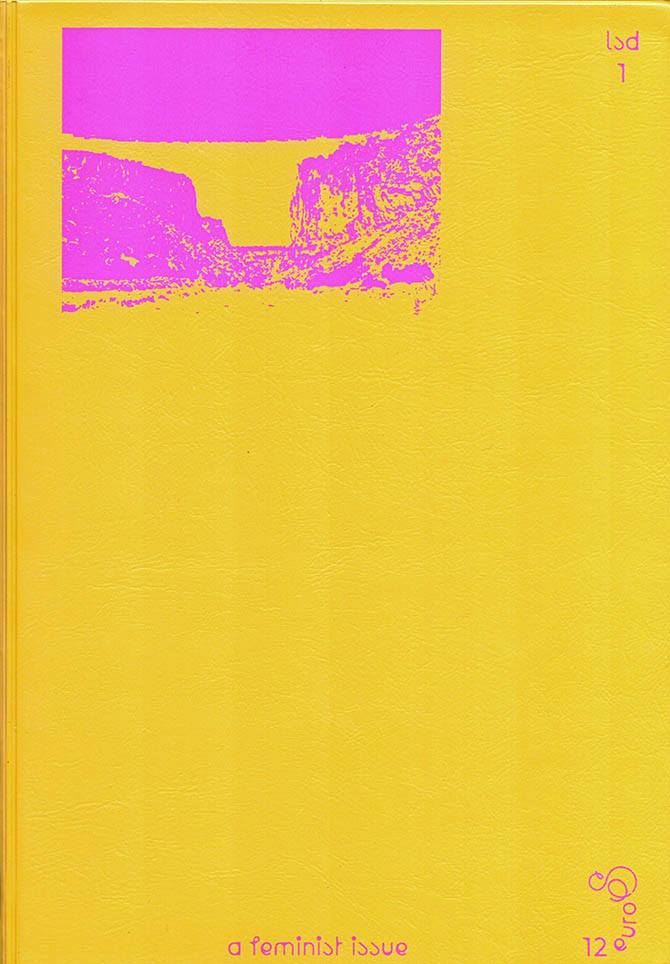
LSD #01 – A Feminist Issue
The first issue of the Cahiers du centre national du graphisme, around the relationship between graphic design and feminism.
Speaking about Chaumont and its festival, Vanna Pinter once wrote rather modestly, “The graphic design faith has remained in dependable legitimate hands, the hands that ensure the transfer of power.” To act outside of those transfers of power, from a co-opting of use, is to run the risk of a possible delegitimization. Acting on the fringe, adopting another vantage point, is therefore not without its risks—in terms of territorial thinking—but must be an absolute in a global context.
At the second iteration of the International Graphic Design Biennial in 2019, we tackled a number of themes, from invisiblization with Silvia Baum, Claudia Scheer and Lea Sievertsen [Not a Muse], and the postcolonial question with Jonathan Castro, to transformations of capital and the repercussion on the economy of a discipline with Tereza Ruller [The Rodina], and the notion of commitment with Teresa Sdralevich. In that context we found many more allies than fans of a “Bingo du Male Tears.”
Opening this first issue of our periodical and titling it “A Feminist Issue” around the figure of Anja Kaiser is about approaching graphic design from a feminist, collaborative and co-constructionist perspective. It is a perspective that a number of others have joined here, including Anna Jehle, Juliane Schickedanz, Fabrice Bourlez, and Loraine Furter. The title of this issue implies another, such as “An other Feminist Issue” coming after “Another Feminist Issue,” for there are many voices and they require us to lend them an ear while being attentive and precise. Le Signe Design [LSD], designed by officeabc, is the periodical of a platform for production, distribution, creative support, dialogue, and mediation between the artistic field of graphic design and the public, what the National Center for Graphic Design is all about. Le Signe Design is not so much a communications forum as a new way to enter a field of study.
Texts by Anja Kaiser, Loraine Furter, Fabrice Bourlez, Anna Jehle, Juliane Schickedanz.
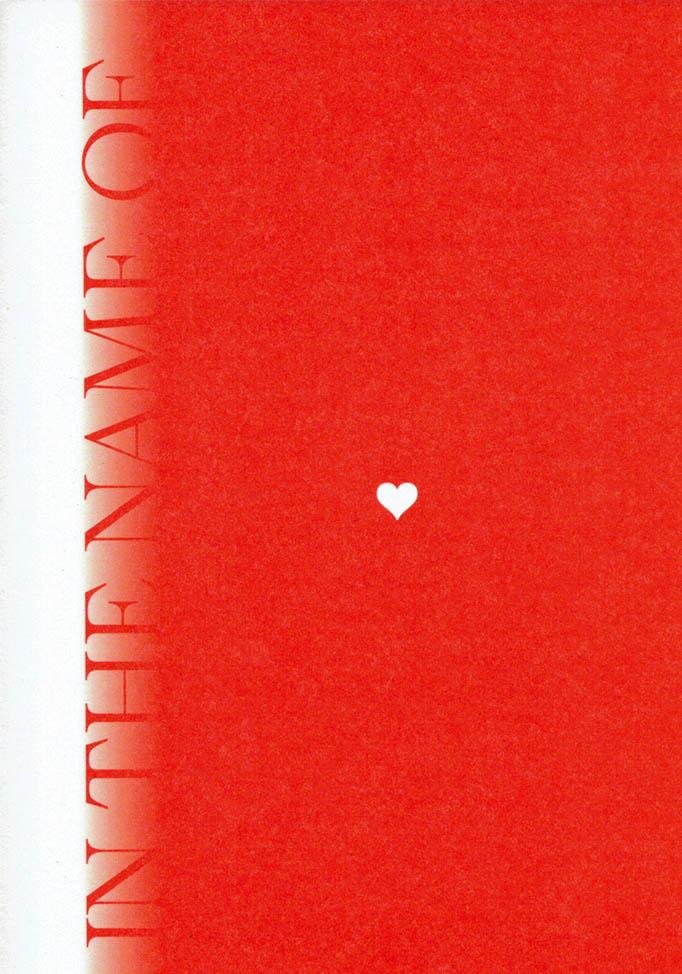
In The Name of Love
Who claims love?
The benign and seemingly innocent heart symbol hides a much more complex story than its surface suggests. The heart is often described as a universal symbol for love, yet its history suggests otherwise; it is closer to a corporate and political medium, embedded with contemporary imbalances of class, gender, and race.
This book wishes to reveal the intricacies and problematics surrounding the heart symbol and explores how technological, political and historical dominance has impacted the development of communication and our access to (online) information today.
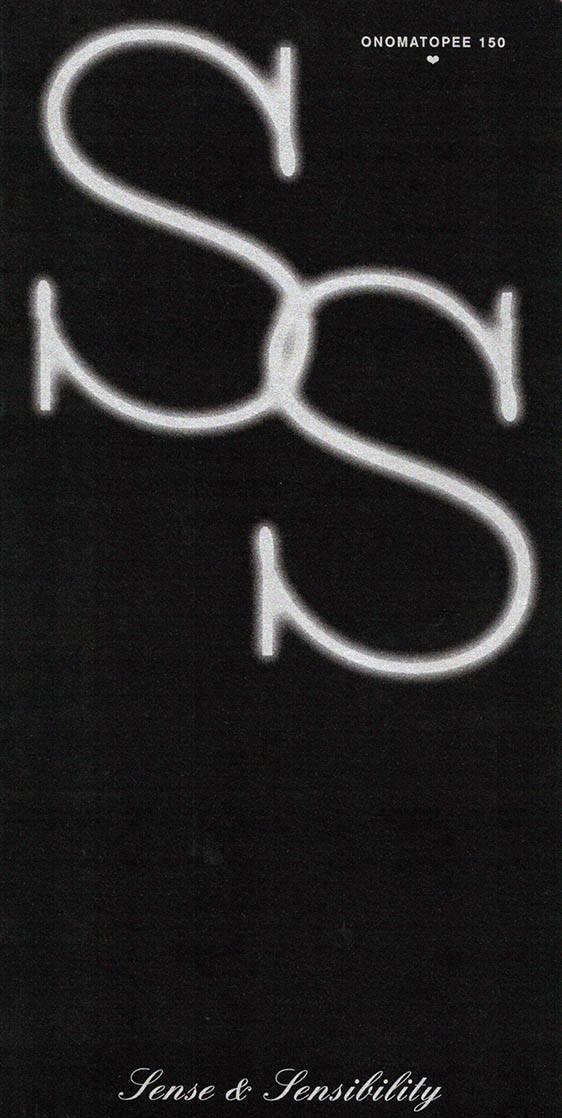
Sense & Sensibility
It’s because feminism has become a fashionable commodity now, that we’re in desperate need of a more inclusive and varied reflection on contemporary girlhood, gender equality struggles, and the relationship between gender, politics and philosophy.
This book documents the production and thought processes of 6 engaging artists and designers regarding the theme, and features a collection of essays by artists and academics, writers and rioteers, curators and journalists.
With contributions by Mandy Roos, Gabriel A. Maher with Roberto Pérez de Gayo and Carly Rose Bedford, Olle Lundin, Janina Frye, Camille Auer, Barbara Bolt, Daantje Bons, Charlotte van Buylaere, Ece Canlı and Luiza Prado de O. Martins, Victoria Ledig, Alicja Melzacka, Nina Power, Barbara Smith for Nasty Women and Aynouk Tan.
Edited and curated by Pernilla Ellens
Graphic design by Virginie Gauthier
Made possible thanks to the municipality of Eindhoven and the province of Noord-Brabant.

Blood
Six years in the making, 'BLOOD' is the first comprehensive English translation of the poems of Danish art historian, communist activist, and writer R. Broby-Johansen.
Translated, edited, and designed by Line-Gry Hørup, Broby-Johansen’s poems are accompanied by a series of full colour photographs by Amsterdam photographer Johannes Schwartz, which document the pair’s trip to Brody-Johansen’s recently established archive. So recent, that they were in fact the first to view it. 'BLOOD' was made possible with the support of Stimuleringsfonds and the Danish Arts Foundation.
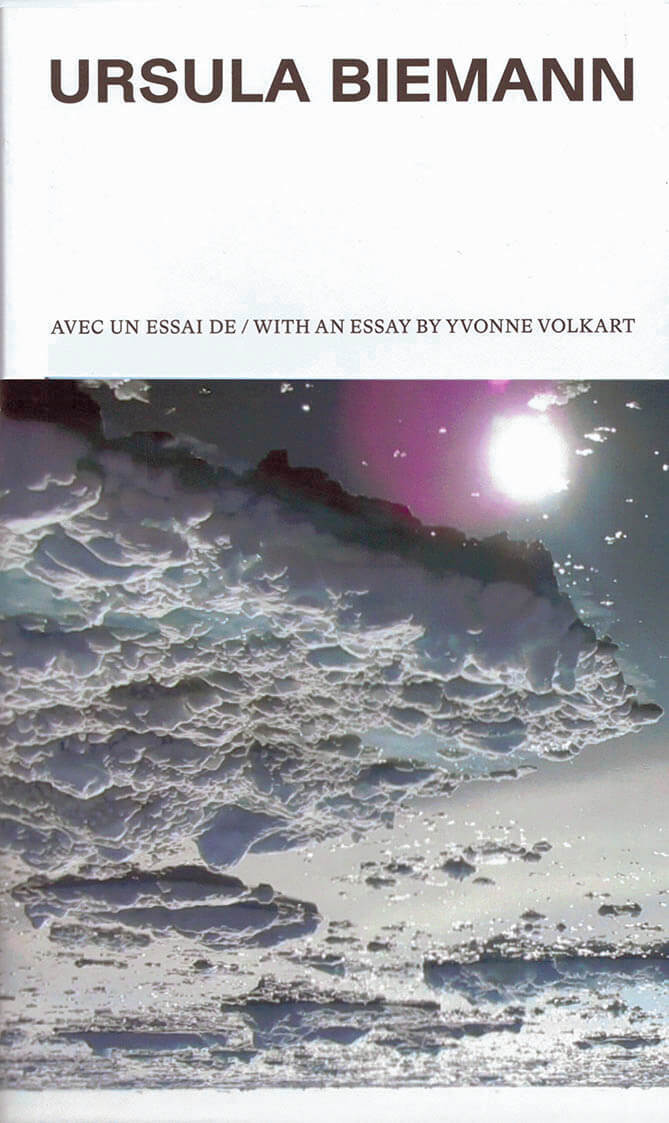
Ursula Biemann
A notebook based on Ursula Biemann's latest film, Acoustic Ocean, an expedition to the depths of the Arctic Ocean in search of interspecies communications.
32 p, ills colour, 14 x 23 cm, pb, French/English
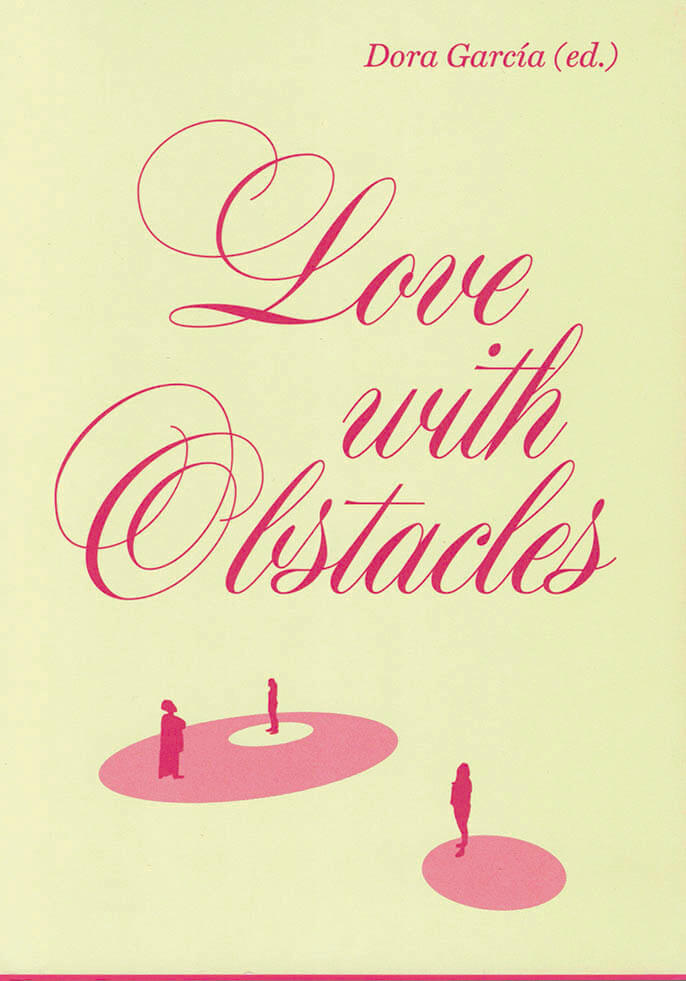
Love with Obstacles (Amor Rojo)
This is Spanish artist Dora García’s collaborative research on the life and legacy of Alexandra Kollontai (1872–1952), a socialist, activist, feminist, and intellectual. As a Soviet ambassador from 1922 to 1945, she advocated the sexual and social emancipation of women, and implemented many measures women continue to fight for today, such as legalising abortion and protecting women’s rights. Her writings found special resonance in Latin America, where her influence is still felt in contemporary feminist struggles.
The essays “On the Dragon” and “White Bird” are translated into English here for the first time, and are published alongside a selection of poems by Anna Akhmatova.

Licorice
'Licorice' is a novel, a mixed-up tale about a film, a windmill and city folk. The plot involves the making of a film by characters who are trying to gain permission to record the noises inside a reconstructed windmill to use as its soundtrack. When they don't succeed, the eponymous character Licorice makes an Aeolian harp out of bits she finds in a small electricals recycling bin. Licorice is the first title in the forthcoming Interstices series of books guest edited by Brighton based author Bridget Penney, whose previous publications include Honeymoon with Death and Other Stories (Polygon, 1991) and Index (Book Works, 2008).
144 p, ills colour & bw, 11 x 18 cm, pb, English

Decoding Dictatorial Statues
Decoding Dictatorial Statues, a project by Korean graphic design researcher Ted Hyunhak Yoon, is a collection of images and texts revolving around the different ways we can look at statues in public space. How can we decode statues and their visual languages, their object hood and materiality, their role as media icons and their voice in political debates?
Anticipating to current debates the book responds to urgent concerns about the representation of our heritage by not only asking us to examine what history to put on a pedestal, but to also consider the visual language of the statue itself. Decoding Dictatorial Statues therefore offers opportunity to level with the actual affairs the statues promote. In parallel to this deconstruction of the politics of a statue’s gestures the project discusses symbolic notion of culture and design by offering opportunity to another, and more cross-cultural understanding.
Ted Hyunhak Yoon(b.1987) is a graphic designer∙researcher based in Seoul(KR)∙Maastricht(NL). He graduated from MA Visual Communication, Royal College of Art in London, UK. From April 2017 onwards, he is a participant of a residency programme in Jan van Eyck Academie, Maastricht, Netherlands.
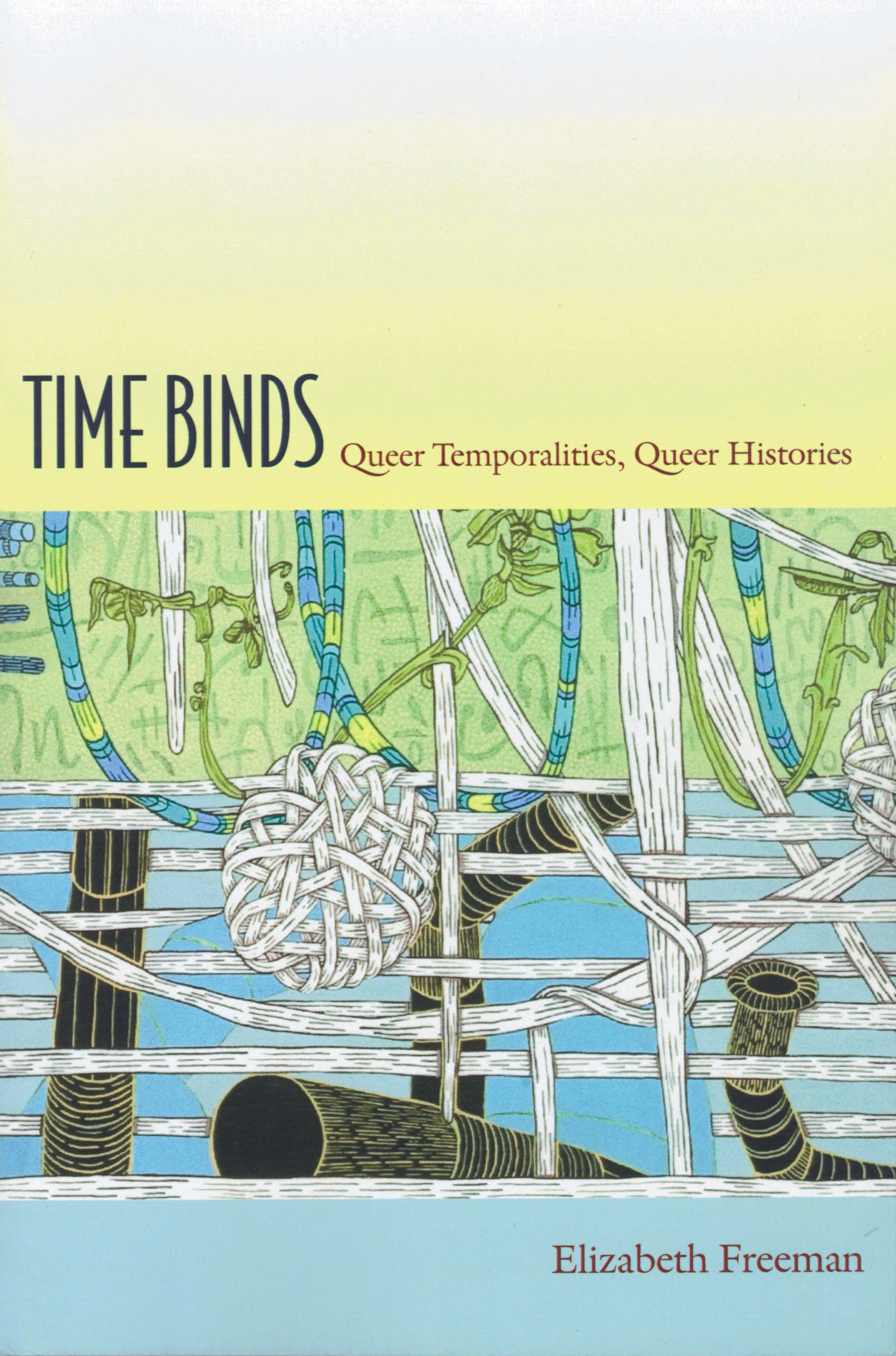
Time Binds - Queer Temporalities, Queer Histories
Time Binds is a powerful argument that temporal and sexual dissonance are intertwined, and that the writing of history can be both embodied and erotic. Challenging queer theory’s recent emphasis on loss and trauma, Elizabeth Freeman foregrounds bodily pleasure in the experience and representation of time as she interprets an eclectic archive of queer literature, film, video, and art. She examines work by visual artists who emerged in a commodified, “postfeminist,” and “postgay” world. Yet they do not fully accept the dissipation of political and critical power implied by the idea that various political and social battles have been won and are now consigned to the past. By privileging temporal gaps and narrative detours in their work, these artists suggest ways of putting the past into meaningful, transformative relation with the present. Such “queer asynchronies” provide opportunities for rethinking historical consciousness in erotic terms, thereby countering the methods of traditional and Marxist historiography. Central to Freeman’s argument are the concepts of chrononormativity, the use of time to organize individual human bodies toward maximum productivity; temporal drag, the visceral pull of the past on the supposedly revolutionary present; and erotohistoriography, the conscious use of the body as a channel for and means of understanding the past. Time Binds emphasizes the critique of temporality and history as crucial to queer politics.
Elizabeth Freeman is Associate Professor of English at the University of California, Davis. She is the author of The Wedding Complex: Forms of Belonging in Modern American Culture, also published by Duke University Press.

Women in Concrete Poetry: 1959-1979
Mónica de la Torre, Alex Balgiu
An expansive anthology focused on concrete poetry written by women in the groundbreaking movement’s early history. It features 50 writers and artists from Europe, Japan, Latin America, and the United States selected by editors Alex Balgiu and Mónica de la Torre.
Women in Concrete Poetry: 1959-1979 takes as its point of departure Materializzazione del linguaggio—the groundbreaking exhibition of visual and concrete poetry by women curated by Italian feminist artist Mirella Bentivoglio for the Venice Biennale in 1978. Through this exhibition and others she curated, Bentivoglio traced constellations of women artists working at the intersection of the verbal and visual who sought to “reactivate the atrophied tools of communication” and liberate words from the conventions of genre, gender, and the strictures of the patriarchy and normative syntax.
The works in this volume evolved from previous manifestations of concrete poetry as defined in foundational manifestos by Öyvind Fahlström, Eugen Gomringer, and the Brazilian Noigandres Group. While some works are easily recognized as concrete poetry, as documented in canonical anthologies edited by Mary Ellen Solt and Emmett Williams in the late ’60s, it also features expansive, serial works that are overtly feminist and often trouble legibility. Women in Concrete Poetry: 1959-1979 revisits the figures in Bentivoglio’s orbit and includes works by women practicing in other milieus in the United States, Eastern Europe, and South America who were similarly concerned with activating the visual and sonic properties of language and experimenting with poetry’s spatial syntax.
Artists and writers include Lenora de Barros, Ana Bella Geiger, and Mira Schendel from Brazil; Mirella Bentivoglio, Tomaso Binga, Liliana Landi, Anna Oberto, and Giovanna Sandri from Italy; Amanda Berenguer from Uruguay; Suzanne Bernard and Ilse Garnier from France; Blanca Calparsoro from Spain; Paula Claire and Jennifer Pike from the UK; Betty Danon from Turkey; Mirtha Dermisache from Argentina; Bohumila Grögerová from the Czech Republic; Ana Hatherly and Salette Tavares from Portugal; Madeline Gins, Mary Ellen Solt, Susan Howe, Liliane Lijn, and Rosmarie Waldrop from the US; Irma Blank and Ruth Wolf-Rehfeldt from Germany; Chima Sunada from Japan; and Katalin Ladik and Bogdanka Poznanović from the former Yugoslavia.
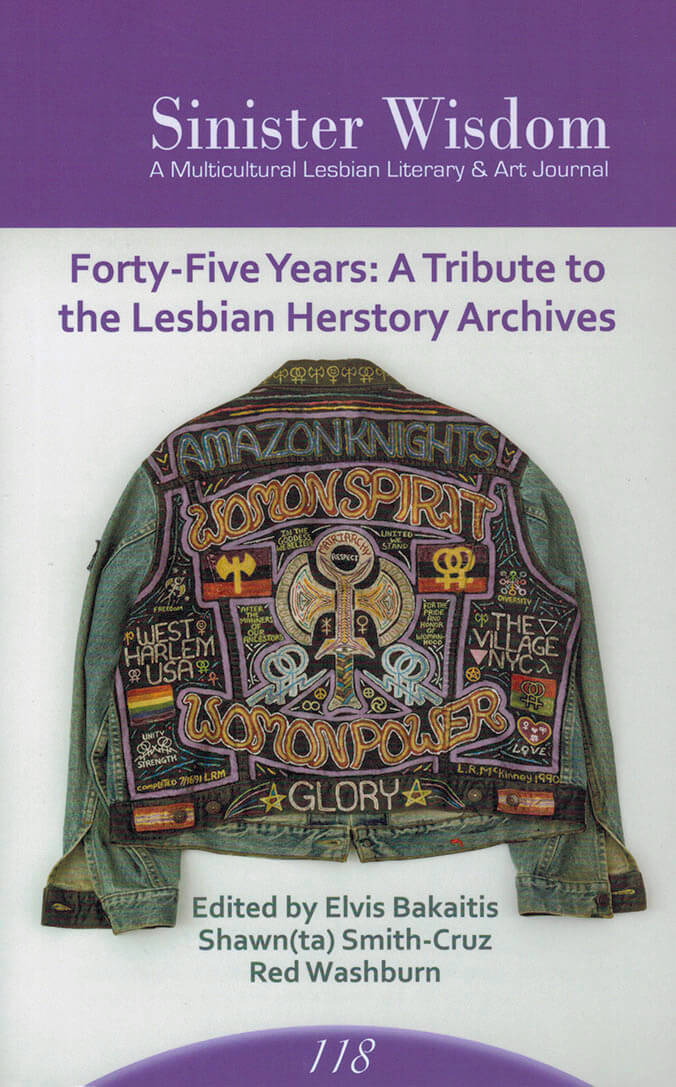
Forty-Five Years: A Tribute to the Lesbian Herstory Archives
Forty-five years ago movements of liberation made possible the birth of a new project in the world, the Lesbian Herstory Archives. In Sinister Wisdom 118 are some of the founding stories, telling what it meant to walk first into an apartment and later into a four-story limestone building, where shame became history, secrets became shared connections and complex lesbian, queer histories were enriched by maintaining intergenerational community.
A grassroots collection, the Archives was intentional about engaging with all facets and complexities of lesbian life, inclusive of diversity in race and gender-identity, from the bar life of the fifties and before, to the lesbian-feminist cultural richness of the mid-twentieth century and beynd, to the gender richness of the tweny-first. This issue honors an Archives that articulates the complexities of how lesbians make our way in the world.

Every Time I Am Away From The Internet, I wonder if I am loved
You know the feeling : you’re online, right, and for no particular reason, you start to feel weird. Like something glorious is about to happen. And then, just like that, it fades, the glory has passed; now you feel sad. Did you miss it?
Oh, what a time to be alive. I love this life. I sometimes wonder whether it loves me back, but I try and convince myself that such things don’t matter. Nothing does, and that’s the best part.
Well, anyway, this is an exploration of some of the feelings that could crush us in the digital 21st century.

Footfall Almanac 2019
The Footfall Almanac 2019 collects observations, objects and other traces to instigate a discussion on surveillance techniques currently deployed in shopping malls, and during public major events in Brussels.
Wireless tracking of mobile phones has become a common method to monitor crowds without requiring explicit permission or active cooperation. Private companies, as well as civil agencies, use it to keep a close eye on the movements of city dwellers through public spaces, the former to forecast sales and the latter for crowd management purposes.
The Footfall Almanac 2019 observes this encounter of actors and predictions in their shared technologies and terminologies.
With contributions by: Femke Snelting and Dennis Pohl.
This project was initiated on invitation from Constant VZW who has been invited by 431 Architects to participate in The New Local, part of the Precarious Pavillions in the context of Kaai Theater’s Festival: CITY:LAND.
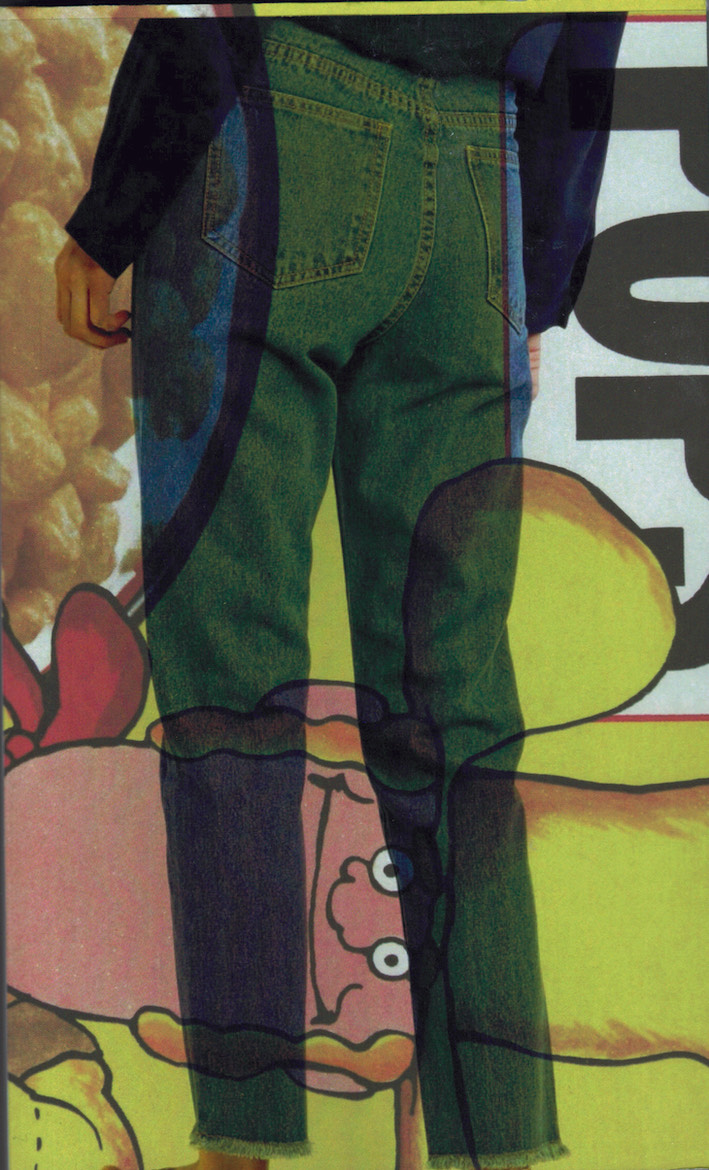
Homophone Dictionary
Homophone Dictionary was originally a file that is compiled by the now 96-year-old former schoolteacher Susan Nixon. She has build up many collections throughout her life, almost all of them exist out of objects, except one: after her retirement she compiled a word document that by now exist out of almost 1000 homophones; two, or more words that you pronounce similar but have a different meaning, often the spelling is also different.
The document is structured as a dictionary and the homophones are illustrated with examples that are based on autobiographical information. The structure of Homophone Dictionary also refers to speech therapy exercises and concrete poetry.
“As a student nurse learning medical terminology, I became fascinated with understanding the roots of words. When I had a young family, words were a principal source of entertainment: it was not unusual for one of the children to slip from their chair at the dinner table and fetch a dictionary in order to settle a dispute or satisfy someone’s curiosity. Then I became a teacher and brought this love of words into the classroom. My habit of word collecting became the children’s habit – my pupils became ‘word-lovers’ and ‘list-makers.’
I casually collected homophones for years. When introducing homophones into the classroom, the kids found definitions dull; the typical reaction was, ‘Yes, but give me a sentence using the word!’ and this idea emerged: a book of sentences demonstrating the meanings of homophone pairs or sets.”
Author Sue Nixon, editor Riet Wijnen, Offset print
20,4 × 12,4 cm, 423 pages
edition of 500
Published 2020

one long continuous line or a thought that dissolves into the distance
A short text or a long line written by Mette Edvardsen for Etcetera magazine (June 2018) on an invitation to elaborate on her approach to text, writing and speech from a choreographic point of view. Held by a cardboard cover, the text is here published on its own as a very slim book.